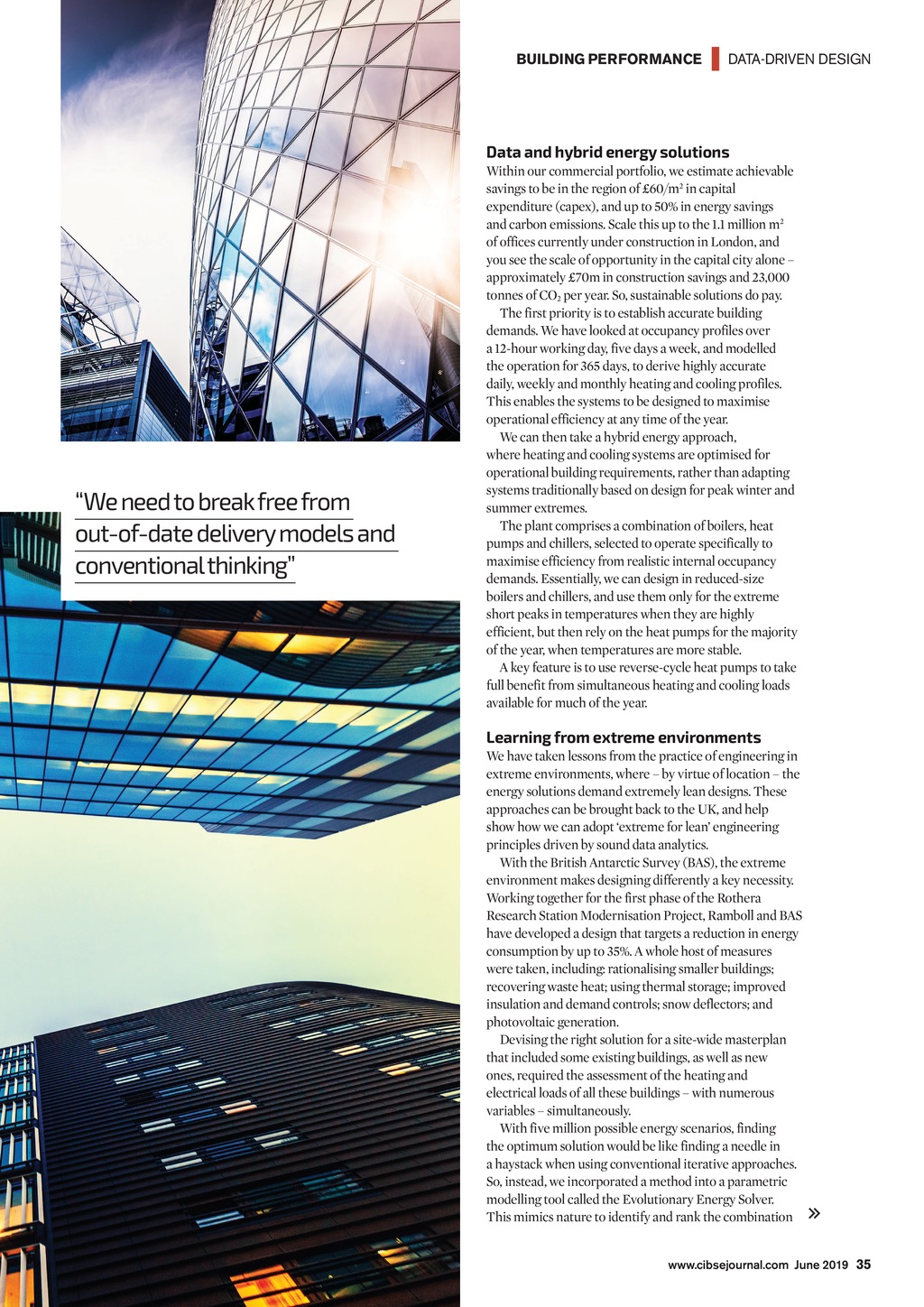


BUILDING PERFORMANCE | DATA-DRIVEN DESIGN LEANER MACHINES Data-driven design can reduce energy consumption by reducing the oversizing of plant. Rambolls Andrew Henderson shares building performance data that suggests 30% of heating and cooling plant capacity will never be required I n May this year, the Committee on Climate Change (CCC) recommended that the UK government immediately set legally binding targets to cut greenhouse gas emissions to zero by 2050. It made it clear that this will not be easy to achieve, and stabilising global warming will require action from every sector. Construction is no exception, and is especially important because 50% of the worlds rawmaterial consumption is through the development and use of buildings. As well as galvanising government support, it is up to us as an industry to develop new methods of working that allow us to achieve this goal. This may seem daunting, but better environmental practices can also be beneficial for the bottom line. Ramboll recently conducted analysis of the operational energy performance of more than 100 commercial properties within our clients UK portfolios. We found thatheating, cooling and electrical systems in buildings across the UK are regularly designed with more capacity than they will ever need bad for the planet and the bottom line. So why is this happening and what can we do to solve it? operation early in the design development, so more informed decisions are made to deliver more efficient buildings. We have also taken lessons from our work in extreme environments and applied it back into the UK, to deliver leaner systems. While building owners and developers might make some savings on initial design fees, and take comfort in having a building designed to the codes, the outcome for them, the tenants, the building users and the environment, can be greatly improved. We need to break free from out-of-date delivery models and conventional thinking. Playing it safe We found that, in its efforts to achieve technical compliance, the industry is over-designing and, consequently, installing too much capacity in building systems. Our analysis showed that, in the UK, designing to codes and guidance as well as pressurised consultants commoditising and reusing safe designs, often with only minor adaptations from previous projects is leading to massive inefficiency. The reality is that there are smarter ways to achieve and exceed compliance standards without increasing capital expenditure. We studied the operational energy performance of 100commercial properties within our clients UK portfolios, using real data. Often, we discovered, 50% of the electrical supply capacity will never be used, and 30%of the cooling and heating plant capacity will never run. Of course, the space required for this unnecessary plant will exist for the lifetime of the building and will never be monetised. Normally, designers will turn to codes, occupancy levels and the extremes in environmental conditions to inform design but this is causing significant waste and inefficiency in plant operation. Our findings show there is a huge gap between predicted performance and reality. The key is to understand how a building will perform by simulating its 34 June 2019 www.cibsejournal.com CIBSE Jun19 pp34-36 Ramboll.indd 34 24/05/2019 19:00